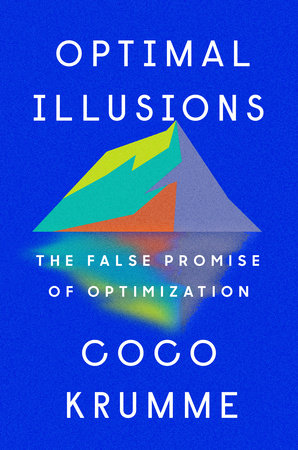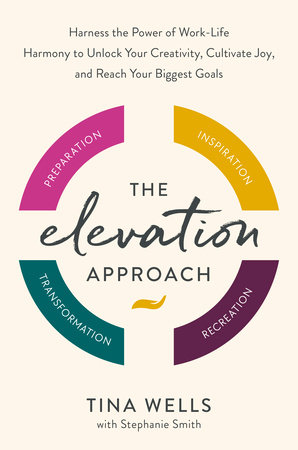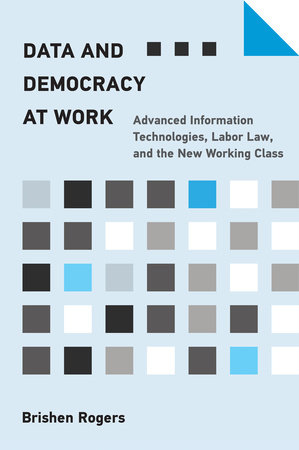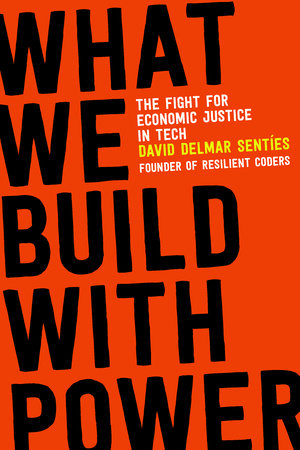Quick Summary
One-sentence summary
“Material World by Ed Conway explores the intricate web of economic interconnectedness, revealing how the global flow of goods and resources shapes our lives in ways we seldom recognize.”
Big Idea
The big idea of Material World is to uncover the hidden stories behind the objects we use daily, showcasing the complex global network that underlies our material world and its impact on economies, societies, and individuals.
Five Key Ideas
- Global Interconnectedness: Conway delves into the intricate connections between countries and economies, illustrating how a simple product can have a far-reaching journey across the world before reaching our hands.
- Resource Dependency: The book highlights our dependence on finite resources and explores the implications of unequal resource distribution, shedding light on the geopolitical dynamics at play.
- Supply Chain Complexity: Conway dissects the complexity of modern supply chains, emphasizing how disruptions in one part of the world can have cascading effects, as witnessed during global events like pandemics or political turmoil.
- Consumer Impact: Material World explores how consumer choices can inadvertently influence global economic and environmental trends, urging readers to be more conscious consumers.
- Future Trends: The author speculates on the potential future scenarios for our material world, considering factors like technological advancements, climate change, and shifting global power dynamics.
Actionable Advice
Conway encourages readers to:
- Be mindful consumers, considering the ethical and environmental implications of their purchases.
- Stay informed about global economic trends and their potential impact on daily lives.
- Advocate for sustainable practices and policies to ensure a more resilient and equitable material world.
About the Author
Ed Conway is an accomplished journalist and economist, known for his insightful analyses of global economic trends. With a background in both journalism and economics, Conway brings a unique perspective to his exploration of the material world.
Read Next
- “The Box” by Marc Levinson: Dive deeper into the history and impact of container shipping, a key component of modern global trade.
- “This Changes Everything” by Naomi Klein: Explore the connection between capitalism, climate change, and the urgent need for systemic change.
- “Sapiens” by Yuval Noah Harari: Broaden your understanding of human history and its implications on the present and future.
In Depth
Global Interconnectedness
In the fast-paced dance of global commerce, the first key idea in “Material World” by Ed Conway is the profound concept of global interconnectedness. Conway unravels the intricate threads that weave our economies together, emphasizing that a seemingly mundane product on our shelves has a narrative spanning continents.
Conway underscores, “Global interconnectedness isn’t just a buzzword; it’s the heartbeat of our material world.”
In detailing this idea, Conway elucidates the journey of a smartphone—a device emblematic of the modern era. From the extraction of rare minerals in Congo to the assembly lines in China, and finally, to the hands of consumers in the Western world, each stage represents a node in a vast web of global connections.
Example:
One poignant example Conway provides is the tale of cobalt, a key component in smartphone batteries. In the Democratic Republic of Congo, where a significant portion of the world’s cobalt is mined, the extraction process often involves child labor and hazardous conditions. Conway brings to light the stark reality, stating, “[Cobalt] links the luxury of our smartphones to the poverty of those who mine it.”
This example serves as a microcosm of the broader theme—our daily possessions are entwined with the labor and resources of distant lands, creating an interdependence that goes unnoticed by many consumers.
In this web of interconnectedness, disruptions in one part of the world can reverberate globally. As Conway aptly puts it, “A strike in a factory in China, a drought in Argentina, or a political upheaval in the Middle East—each of these events can send shockwaves through the global economy.”
The author challenges the reader to rethink the notion of local versus global, asserting that the dichotomy is increasingly blurred. A product’s origin is no longer confined to a single nation; it is a collaborative creation shaped by the hands and resources of people across the globe.
In a world where information and products flow seamlessly across borders, understanding this global interdependence becomes crucial. Conway prompts us to recognize our role as participants in a vast, interconnected system and to consider the broader implications of our choices.
In embracing the first key idea of global interconnectedness, “Material World” beckons readers to peel back the layers of the seemingly ordinary items in their lives. Each possession, a silent storyteller of a journey that spans continents, prompts reflection on the unseen forces shaping our material world. The narrative of global interconnectedness challenges us to view the world not through a narrow lens but with a panoramic perspective, recognizing the intricate dance that connects us all.
Resource Dependency
In the intricate tapestry of our material world, Ed Conway’s exploration ventures into the second key idea—Resource Dependency. This notion unpacks the reality that our daily lives are tethered to the availability and distribution of finite resources across the globe.
Conway succinctly captures this idea, stating, “Our material world hinges on the availability of resources, and their distribution shapes the balance of power.”
Delving into the book’s pages, a striking example that epitomizes resource dependency is the narrative surrounding oil. Conway details the geopolitical chess game played out on the canvas of oil-rich regions, where nations wield economic influence and power based on their control over this coveted resource.
To illustrate, Conway presents a compelling perspective, “[Oil] is not just fuel; it’s a geopolitical lever. The control of oil reserves has been a driving force behind conflicts and alliances throughout history.”
The example of oil serves as a potent reminder that our material world is not only sustained by resources but is also significantly shaped by the geopolitics of resource access and control. The quest for oil has molded international relations, influencing the rise and fall of nations and underlining the intricate dance of power in our interconnected world.
The book prompts us to question our resource consumption patterns, challenging us to consider the implications of relying heavily on finite resources. “As consumers,” Conway suggests, “we hold the power to reshape resource dependency by making mindful choices and supporting sustainable practices.”
Resource dependency extends beyond the geopolitical stage; it filters down to impact individual lives. Conway’s exploration leads us to reflect on the vulnerability inherent in a system heavily reliant on limited resources. As he observes, “In a world where demand for resources outstrips supply, understanding our resource footprint becomes a crucial aspect of responsible citizenship.”
The second key idea, resource dependency, is a call to awareness. It prompts us to recognize that our material world is intricately tied to the availability of resources, and the choices we make as individuals contribute to the larger narrative of resource sustainability. As Conway guides us through this exploration, he unveils the delicate balance between abundance and scarcity, urging readers to view their material footprint through the lens of global interdependence.
Supply Chain Complexity
Turning the pages of “Material World” by Ed Conway, we step into the labyrinth of the third key idea—Supply Chain Complexity. Conway intricately unravels the web of connections that link producers to consumers, emphasizing the intricacies and vulnerabilities embedded in the modern supply chain.
In Conway’s own words, “Supply chains are the arteries of the global economy, pumping goods across borders and shaping the fate of nations.”
To illustrate the depth of this complexity, Conway guides us through the example of a seemingly simple product—a T-shirt. From the cotton fields of India to the spinning mills in Bangladesh, and finally to the retail shelves in the United States, the T-shirt’s journey involves a myriad of players and processes. Conway encapsulates this journey with a poignant observation, “[A T-shirt’s] label may say ‘Made in China,’ but its story spans the globe.”
This example highlights the intricate dance of interdependence between nations, industries, and individual actors within the supply chain. The T-shirt serves as a microcosm, revealing the vast network of suppliers, manufacturers, and distributors that collaborate to bring a product to market.
In the exploration of supply chain complexity, Conway delves into the consequences of disruptions, echoing, “The ripple effects of a disrupted supply chain can be felt far beyond the immediate point of disturbance.” Whether it be a natural disaster, political instability, or a global pandemic, the fragility of interconnected supply chains becomes starkly evident.
The author doesn’t merely present the challenges; he invites readers to consider the broader implications. “Understanding supply chain complexity,” he suggests, “encourages us to be resilient and proactive in the face of disruptions, advocating for a more robust and adaptable global economic system.”
The third key idea prompts us to look beyond the final product and recognize the invisible threads that bind us globally. As consumers, we’re urged to appreciate the complexity of the supply chains that deliver our goods and to be mindful of the potential impacts of disruptions. Conway’s exploration serves as a wake-up call, challenging us to think not only about what we consume but also about the intricate systems that make consumption possible. In a world where the supply chain is as long as the globe is wide, understanding this complexity is essential for navigating the present and shaping the future.
Consumer Impact
Stepping further into the tapestry of “Material World” by Ed Conway, we encounter the fourth key idea—Consumer Impact. Conway dissects the profound influence that individual choices wield in shaping the global economic and environmental landscape.
As Conway succinctly puts it, “Every purchase is a vote, and collectively, consumers hold the power to drive change.”
To illustrate this idea, Conway takes us through the journey of a popular consumer product: the coffee bean. From the high-altitude farms in Colombia to the bustling coffee shops in Europe, each cup of coffee carries a narrative of global interconnectedness. Conway reinforces this notion with a resonant statement, “[Coffee] isn’t just a beverage; it’s a testament to the choices consumers make and their impact on distant communities.”
Consumer Impact isn’t just about recognizing the power held in the act of purchasing; it’s about understanding the implications of our choices on a global scale. Conway advocates for conscious consumerism, urging us to consider the ethical and environmental footprint of the products we buy. In his own words, “Choosing products that align with our values can reshape industries and foster positive change.”
An illuminating example from the book is the scrutiny of fast fashion, an industry notorious for its environmental and ethical impact. Conway underscores the gravity of consumer choices with a compelling observation, “[Fast fashion] isn’t just a trend; it’s a reflection of consumer demand that drives a cycle of overconsumption and environmental degradation.”
The exploration of consumer impact invites us to reflect on the power we hold as individuals. Conway encourages a shift in mindset—from passive consumers to active participants in shaping the market. “By supporting sustainable practices and demanding transparency,” he suggests, “consumers can be catalysts for positive change.”
This key idea serves as a call to action, emphasizing that our choices reverberate globally. It prompts us to be mindful not only of the immediate gratification of our purchases but also of the broader implications. The narrative of consumer impact challenges us to see beyond the allure of convenience, urging us to be conscientious stewards of our material world. As we navigate the aisles and click through online shopping carts, Conway’s insights resonate, reminding us that the power to shape a sustainable and equitable future lies in the hands of the everyday consumer.
Future Trends
Navigating the pages of “Material World” by Ed Conway, we arrive at the doorstep of the fifth key idea—Future Trends. Here, Conway ventures into the realm of speculation, exploring the potential trajectories that our material world might follow in the coming years.
With characteristic clarity, Conway asserts, “Understanding future trends is like peering through a foggy window into the possibilities that lie ahead.”
The exploration of future trends is not a crystal ball gaze but a calculated analysis of factors shaping our world. Conway dives into the dynamics of technology, climate change, and geopolitical shifts, painting a vivid picture of the forces that could redefine our material reality.
To illustrate the interplay of these forces, Conway delves into the world of renewable energy. His words resonate, “The future of our material world is intrinsically linked to our ability to embrace sustainable alternatives, like renewable energy.”
Example:
One compelling example is the rise of solar power. Conway outlines the transformative potential of solar energy, both in mitigating environmental impact and reshaping the geopolitical landscape. His insight shines through in this reflection, “[Solar power] isn’t just about harnessing sunlight; it’s a catalyst for reducing dependence on finite resources and redefining the global energy balance.”
The narrative of future trends challenges us to be forward-thinking, emphasizing that the choices we make today set the course for tomorrow. Conway urges readers to consider the environmental impact of current trends and technologies, prompting us to ask, “What kind of material world do we want to leave for future generations?”
As we stand at the crossroads of innovation and sustainability, Conway’s exploration invites us to be active participants in shaping the future. “The material world isn’t static,” he notes, “and understanding future trends empowers us to navigate change and contribute to a more resilient and equitable world.”
The fifth key idea doesn’t provide a definitive roadmap but encourages a mindset of adaptability and foresight. Conway’s analysis prompts us to engage with the uncertainties of the future with curiosity rather than fear. As we absorb the insights on future trends, we’re invited to be architects of change, recognizing that the material world of tomorrow is shaped by the decisions we make today.
Actionable Advice
- Mindful Consumption: Be conscious of the ethical and environmental impact of your purchases. As Conway aptly puts it, “Every purchase is a vote,” and your choices shape the world.
- Stay Informed: Keep an eye on global economic trends and their potential impact on your daily life. Understanding the broader picture empowers you to make informed decisions.
- Advocate for Sustainability: Support and advocate for sustainable practices. Conway encourages us to be proactive in reshaping industries by endorsing environmentally responsible approaches.
- Be a Responsible Consumer: Recognize the power you hold as a consumer to drive positive change. “Choosing products that align with our values“ can reshape industries and promote ethical practices.
- Understand Your Resource Footprint: In a world where demand often exceeds supply, being aware of your resource footprint is crucial. Consider the long-term consequences of your resource consumption.
- Embrace Renewable Energy: Explore and support sustainable alternatives, such as renewable energy. Conway highlights the transformative potential of “solar power,” signaling a shift towards a more sustainable future.
- Be Adaptable: Acknowledge that the material world is dynamic. Understanding and embracing future trends empowers you to navigate change and contribute to a resilient and equitable world.
- Demand Transparency: Advocate for transparency in supply chains. Conway emphasizes the importance of understanding the journey of products, from raw materials to the finished goods on your shelf.
- Question Fast Fashion: Reflect on the environmental and ethical implications of fast fashion. Conway’s insights encourage us to break the cycle of overconsumption.
- Support Sustainable Technologies: Engage with and endorse technologies that contribute to a more sustainable material world. Stay curious about innovations that align with environmental responsibility.
About the Author
Ed Conway, a seasoned journalist and economist, has woven a career characterized by insightful analyses of global economic trends. Born and raised in the United Kingdom, Conway earned his stripes as the Economics Editor for Sky News. His journey into the complex world of economics has been marked by a commitment to translating intricate concepts into digestible insights for the everyday reader.
Conway’s work extends beyond journalism, with notable contributions to the field of economics. Holding a degree in Philosophy, Politics, and Economics from the University of Oxford, his academic background enriches his nuanced perspectives on global economic interplay.
Known for his engaging and accessible writing style, Conway brings a human touch to economic storytelling. His belief in the power of individuals to shape the economic landscape resonates through his emphasis on informed consumer choices and the potential for positive change.
Beyond the bylines, Conway’s belief in the importance of economic literacy shines. Through his work, he strives to demystify the complexities of global economics, empowering readers to navigate the material world with clarity and confidence.
Read These Next
You might like these similar books
- “The Box” by Marc Levinson
- “This Changes Everything” by Naomi Klein
- “Sapiens” by Yuval Noah Harari
- “The Silent Spring” by Rachel Carson
- “Economics: The User’s Guide” by Ha-Joon Chang
FAQ
Q: What is “Material World” about?
A: “Material World” explores the intricate global connections shaping our lives, revealing the unseen stories behind everyday objects.
Q: Who is the author, Ed Conway?
A: Ed Conway is a renowned journalist and economist known for his work at Sky News. He brings a unique blend of academic insight and journalistic flair to his exploration of global economics.
Q: Can you give an example from the book?
A: Certainly! The book delves into the journey of a smartphone, illustrating how it connects distant lands and economies, emphasizing global interdependence.
Q: How does the book address sustainability?
A: Conway encourages sustainable practices through mindful consumerism and advocating for eco-friendly alternatives, shedding light on the environmental impact of our material choices.
Q: Is “Material World” suitable for someone without an economics background?
A: Absolutely. Conway’s writing style is accessible, making complex economic concepts understandable for readers of all backgrounds.
Q: What sets this book apart from others on similar topics?
A: Conway’s storytelling approach humanizes economic concepts, offering a relatable perspective on the global material landscape. The book combines journalistic narrative with economic analysis, providing a unique lens.
Q: Are there actionable takeaways from the book?
A: Yes, Conway provides actionable advice, urging readers to be mindful consumers, stay informed about global trends, and advocate for sustainable practices to shape a more resilient material world.







